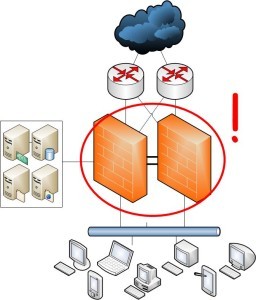In today’s web world, keeping info safe, running fast, while staying reachable matters most – no matter if you’re running networks, grabbing website data, or tracking worldwide activity. Chances are, at some point, you’ve run into proxies just to get things done. Yet they don’t all work alike.
Of all the options out there, static residential proxies are now what many pros go for when they need reliable access, need steadiness – also secrecy – not forgetting realness.
This piece explains what these tools are, their mechanics, yet also highlights when they beat regular data center proxies. Whether you’re deep into network setups or run big online infrastructures, getting familiar with this tech might just boost how smoothly things run.
What Exactly Are Static Residential Proxies?
To get how static residential proxies work, begin at the beginning.
A proxy sits between you and the web. If you visit a site using one, your signal isn’t sent straight from your gadget – it travels via the proxy’s IP instead.
This brings a few perks – like masking your actual IP, skipping location limits, handling data flow, also boosting safety through separated connections.
Home-based proxies rely on real ISP-assigned addresses, just like regular homes do. Because of this, web platforms see the activity as natural user behavior instead of automated signals.
A static home-based proxy means an address from a real person’s internet connection that doesn’t shift over time. Instead of switching locations every few seconds like rotating versions do, these stick to just one spot for quite a while. While some reroute constantly, this type holds steady much longer. Rather than hopping around, it stays put on the same identifier.
This mix of real-home trust plus steady IPs offers a special edge in some uses.
How Static Residential Proxies Work
Static residential proxies act like a middleman connecting your device to the sites you visit.
This is how it works under the surface:
- You reach out to a website.
- The request goes through a fixed home-based proxy instead.
- The target site spots the proxy’s home-based IP instead of your own.
Since the IP comes from an actual home instead of a server farm, the site treats it like normal browsing by a regular person – not some bot or business scraper.
This means network engineers plus data experts get looser access rules, better test setups, or consistent long-term connections.
Why Stability Matters in Networking and Data Tasks
In plenty of jobs, staying steady matters a lot – actually makes or breaks things.
Think about everyday situations like these:
- API checks need steady links that don’t drop. When your IP shifts during a run, things might break or give shaky outcomes.
- Signing in to various web accounts now and then from different places might raise alerts when your IP shifts a lot. While hopping between networks, sudden location jumps could look suspicious to security checks. If you switch countries fast, some platforms may freeze access just in case.
- Data gathering plus website crawling – long-term bots work better with steady IPs so they don’t hit CAPTCHAs or get slowed down.
A static home-based proxy keeps your link stable from one session to the next – so staying logged in, checking systems, or pulling data runs smoother without hiccups.
Fixed or Spinning Home-Based Proxies
Though each kind of proxy fits a role, knowing how they differ matters when setting up networks.
| Feature | Static Home IPs | Changing Home IPs |
| Web Address | Stays the same for long periods | Switches now and then – or every new request |
| Good For | Holding onto accounts, staying logged in, steady access | Grabbing tons of web data, hiding identity online |
| Notice Risk | Almost never gets flagged | Usually safe – unless switching too fast |
| Speed & Stability | Runs smooth most times | Varies a lot depending on route taken |
| When To Use It | Checking how apps work, posting updates, confirming ads | Collecting prices from sites, tracking search rankings, pulling public info |
The takeaway?
If you need steady, unbroken links for your work, static proxies will suit you best – though when hiding identity through heaps of requests matters most, rotating ones could be smarter. While consistent access fits certain jobs well, frequent IP switches help blend in during mass actions.
Common Use Cases in Professional Environments
Software You Rent Plus Websites Checked for Bugs
In SaaS building or running setups, checking performance in various locations pops up often. With steady home-based proxies, coders can mimic actual visitors from diverse spots while skipping alarms in protection layers.
Take online checkers – they test if login steps, data links, or web tools work right when users join from various spots around the globe, even as they switch locations mid-use.
Cybersecurity and Risk Assessment
Security watchers often use stand-ins when checking weak spots, running fake attacks, or collecting info on risks.
A static home IP might lower the risk of getting flagged while doing real research, so squads can check how well websites hold up when tested like normal users would.
Besides, because these proxies act like real people, they show more clearly how dangers might move around on open networks.
Digital Marketing and Ad Verification
For online marketers, steady home-based proxies matter a lot when checking ad visibility across global user groups – using them helps spot differences in real time while avoiding detection. Each test runs smoother because the system mimics genuine local browsing without raising red flags during international campaigns.
Static proxies give steady access without breaking your flow, so advertisers see results like regular visitors do – no interruptions from shifting connections.
This matters a lot when fighting fake ads, since false views or swapped spots might jack up expenses.
Benefits of Static Residential Proxies
a. Steady IP Address
A steady IP keeps connections alive without breaks – perfect when handling accounts or tracking how things run.
b. Less Likely to Get Noticed
Since the IP’s a home-based fixed one, it mixes in with everyday web traffic. Most websites hardly ever block or slow down access from such locations.
c. Stable Connections No Matter the Location
They let people get into region-blocked platforms without issues. Say, someone checking connection delays between global servers might use home-based IP addresses to mimic everyday conditions.
d. Safety Plus Privacy
Standing home proxies hide your actual IP address – so hackers or outsiders can’t easily link activity to your private network.
If your team is exploring providers, it’s essential to buy static residential proxies from reputable sources, for example Proxy-Cheap, that ensure legitimate ISP-issued IPs and robust security measures.
What to Consider When Choosing a Provider
Picking a good proxy service goes beyond price tags.
What experts actually check before setting things up:
- Check reviews to see which services stay online consistently – also, pick ones that respond quickly.
- Make sure the IP addresses come from trusted internet providers instead of reused server farms.
- Fewer borders mean more chances to run trials across regions – so wider reach helps you adapt faster wherever you go.
- Security stuff you need: locked-up links, smooth API handling, or solid dashboard tools.
- Help files and guides? Super useful when you’re hooking up proxies to bots or deployment scripts.
Picking carefully who you work with means your upgrade actually speeds things up instead of causing fresh glitches.
In cases where your organization depends on consistent access, uptime, and authenticity, the decision to buy static residential proxies can significantly simplify maintenance and reduce troubleshooting time.
Ethical and Legal Considerations
Worth noting – proxies can do a lot, but only if handled with care.
Steer clear of proxies meant to dodge real security setups, harvest protected info, or fake someone’s identity. Doing so isn’t just against the rules – it might drag your company into public backlash or legal trouble instead.
Used the right way – like during tests, studies, or handling logins – proxies work just fine as helpers to keep systems running smoothly.
The Growing Role of Proxies in Modern Networking
With cloud setups spreading, along with remote workforces and web-based tools, demand for proxy systems is climbing fast.
Proxies do more than hide your identity – they help with tasks like:
- Spreading traffic while checking response delays
- Global API monitoring
- Content localization
- Data privacy management
The rise of proxy tools follows much the same path as developments in edge systems and spread-out network designs. Since companies now set up servers worldwide, solid proxies that reflect real locations are key – without them, tests don’t mirror actual user conditions.
For teams scaling digital operations or handling sensitive client data, taking the time to buy static residential proxies can offer long-term advantages in both efficiency and data accuracy.
Final Thoughts
Static home-based proxies hit a balance – good speed mixed with real-looking behavior. These setups keep things steady during work jobs, yet still act like normal user activity thanks to their residential roots.
Network pros, techies, or number crunchers – knowing the right moment plus method to use these tools helps smooth out tasks, cut down mistakes, while boosting how well systems hold up.
In short, static residential proxies go beyond hiding your info – they act like a useful network helper, linking managed setups with how websites actually work out there.











